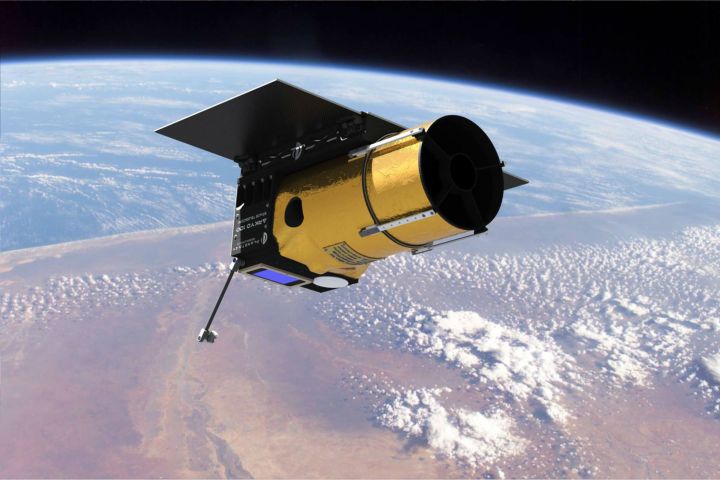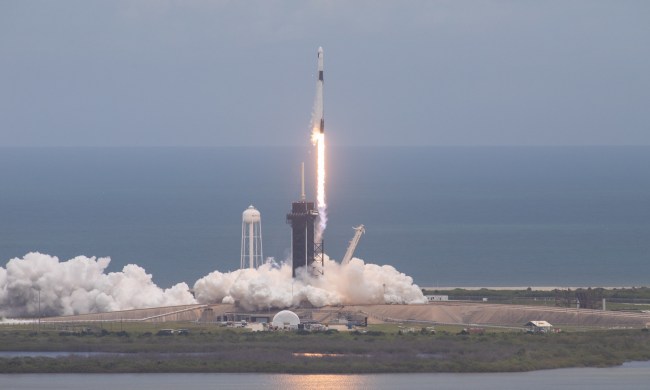
Planetary Resources — the world’s first and foremost asteroid mining organization — has already embarked on a mission to hunt down space rocks and extract the precious materials they contain. It sounds like science fiction, but preparations are underway as we speak.
Thing is, plucking an asteroid from the void is drastically more complicated than panning for gold in a creek. You can’t just point a telescope at the sky, spot a shiny rock in the distance, and shout “let’s go get it!” as you hop into your spaceship. Mining in space requires far more planning, far more strategy, and a hell of a lot more research than mining here on Earth. Therefore, Planetary Resources has developed a very thorough process for prospecting in space, which we’ve detailed in the paragraphs below.
If you’re an aspiring asteroid miner (a “2049er”?), now would be a good time to bust out your notebook.
All The Right Stuff
Just like an employer looking to fill an empty position, Planetary Resources has a list of requirements that an asteroid must meet to be considered as a target. Every step of the mining process — launching from Earth, maneuvering into position on the asteroid, collecting ore, and traveling back — requires a huge amount of resources, so Planetary Resources tends to go for the low-hanging fruit in our solar system: space rocks that are big, valuable, and easy to reach. Generally speaking, the company looks at five different characteristics to determine if an asteroid is a suitable candidate.
Size
One of the first things that PR looks for in an asteroid candidate is size. Obviously, spending hundreds of millions of dollars to chase after a space rock that’s only worth a few million will result in a loss, so good candidates have to be fairly big to make the trip worthwhile. Therefore, Planetary Resources tries to aim for asteroids that are around 300 meters across. But size is just one part of the equation.
Composition
In addition to size, the composition of a given asteroid is also taken into consideration. In the future, Planetary Resources plans to go after metallic (M-type) asteroids containing metals like Iron, Cobalt, and Nickel — which can be used to build structures in space, without having to haul the metal up from Earth’s surface. For now, however, the organization is currently prospecting for carbonaceous (C-Type) asteroids, which are more likely to contain water. Water is especially useful in space, as its hydrogen and oxygen molecules can be separated and used as rocket fuel. Planetary Resources plans to go after C-Type asteroids for its first few missions, but will eventually graduate up to M-Type asteroids as its technology becomes more sophisticated.

Delta-V
Another big factor is the asteroid’s Delta-V, or change in velocity. In spacecraft flight dynamics, this measurement is used to describe the impulse that’s needed to perform a launch or landing on a celestial body like a planet or asteroid. Put simply, it’s how fast an asteroid is moving through space.
As you’d expect, slower-moving asteroids tend to make better mining candidates than fast-moving ones, because it takes more fuel to catch up to them. As such, Planetary Resources prefers to chase after space rocks with a Delta-V of around 5 kilometers per second (a relatively slow speed for asteroids). This allows the company to use more of the mining craft’s mass for tools, instead of filling it with all the extra fuel needed to rendezvous with the asteroid.
Spin
An asteroid’s spin rate is hugely important. If a rock’s rotation speed is too high, it’s considerably more difficult to land on or extract resources from. Matching an asteroid’s speed and rotation, so as to make landing possible, requires a lot of fuel and careful maneuvering, and is sometimes impossible if the spin rate is too high. Therefore, Planetary Resources thoroughly examines the rotational characteristics of each mining candidate. “If it spins like a top, it’s not a good target,” the company explains in its blog post.
Orbit
Finally, one of the the most important characteristics that planetary resources examines is an asteroid’s orbit. In order to be a good candidate for mining, an asteroid should have an orbit that intersects Earth’s at some point, or at least comes close to it. The rock’s orbit also shouldn’t be inclined, or tilted relative to Earth’s orbit around the Sun. Even if an asteroid has an Earth-like orbit, any inclination makes it far more difficult to rendezvous with.

Finding A Perfect Match
When evaluating an asteroid, Planetary Resources considers all of the aforementioned qualities — and its selection process is brutal. If an asteroid has unfavorable characteristics in just one category, it’s immediately considered a “non-ideal” target.
For example, there’s an asteroid called 2008 EV5 orbiting the sun right now, and by most measurements, it’s a fantastic mining target. It’s a C-Type asteroid which might contain water, it’s not moving or spinning too fast, and its a fairly manageable size. The only problem is that it’s got an inclined orbit, so we can only get at it for a few years every decade. So despite being great in nearly every other aspect, Planetary Resources considers 2008 EV5 a non-ideal target.
That’s the thing about space though — there’s a lot of asteroid fish in the solar system sea, so it doesn’t make sense for PR to chase after every shiny rock they see in the sky. It’s far easier (and smarter) for the company to just keep looking until it finds a perfect match — and that’s exactly what it’s doing right now.
At this point, Planetary Resources’ main focus is growing its target list and gathering more data on prospective mining candidates. While you read this, the company is building a new factory in Redmond, Washington, where it plans to amass a fleet of low-cost prospecting spacecraft. If all goes according to plan, these “space drones” will be sent out to swarm potential mining candidates, analyze their composition, and beam that information back to Earth.
Testing for these preliminary survey missions is already underway. PR’s Arkyd 3R craft was deployed from the ISS this past July, and is currently running tests on several of the underlying technologies that will be used to analyze an asteroid’s makeup. Later this year, the company has plans to launch a slightly larger version (the Arkyd 6) into orbit, where it will test an imaging sensor that can be used to identify the presence of water on a given target.
It’s all about gathering more data right now. A full-on mining mission is still a few years off, but as soon as Planetary Resources can get a solid estimate on the cost, difficulty, and feasibility of such a mission, it’ll be off to the races.



